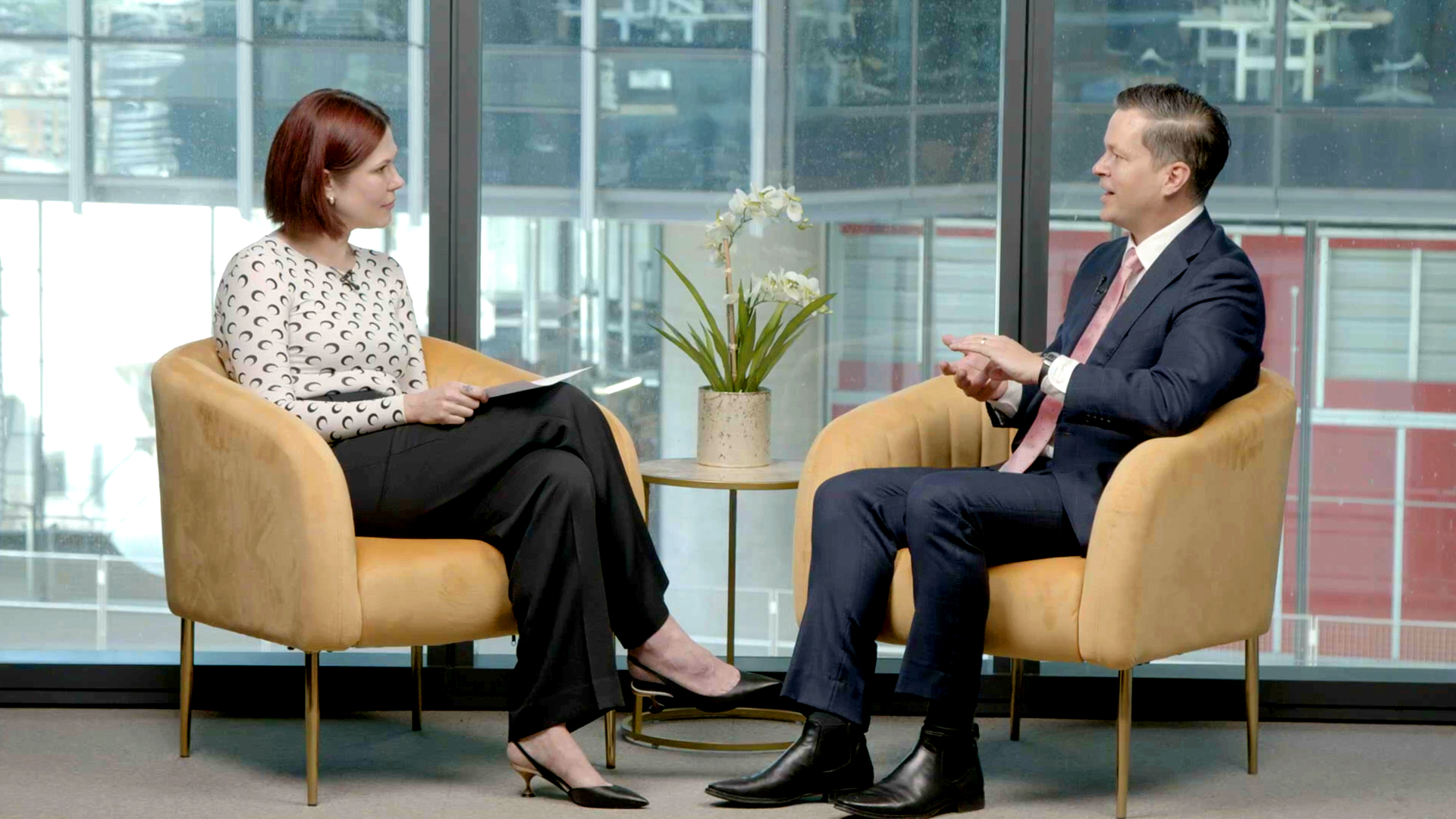The property market’s next big moment is already underway
Please note: this interview was filmed Thursday 6th November 2025.
Population growth, rising construction costs, and supply shortages are reshaping the commercial property market, but for long-term investors, these forces create opportunities rather than risks.
Steve Bennett, CEO of Charter Hall's Direct Property division, says the headlines do not always tell the full story. While global uncertainty and the rate cycle have made some investors cautious, he believes that high-quality, income-producing assets backed by tenants with fortress balance sheets, such as government tenants, ASX top 50 companies, and large private enterprises, remain the sweet spot for consistent returns.
As Bennett explains, the right assets can do more than just hold their value in challenging conditions. They can grow.
“Not only are these assets super defensive, but you are getting that growth that will come through over time.”
It is this combination - reliable defensive income and long-term capital appreciation - that Bennett believes sets the tone for the next phase of the property cycle. In his view, investors do not need to move down the quality curve or chase higher yields in riskier segments. Instead, focusing on irreplaceable real estate and strong tenants can deliver both resilience and reward.
In this interview, Bennett outlines why construction costs and supply constraints are underpinning value across key sectors, why institutional capital is re-deploying into convenience retail, and why he thinks now is the moment for investors to act. For those willing to look through the noise, he says, the conditions are in place for outsized returns in the years ahead.

INTERVIEW SUMMARY
Population growth and supply pressures creating tailwinds
Australia’s surging population is not just driving housing shortages, it is reshaping commercial real estate as well. According to Bennett, the same forces tightening residential supply are flowing through to office, industrial, and retail property.
“Supply is not coming out of the ground quick enough to match higher demand,” he says.
“We don’t think that’s going to change until either building costs fall, which they rarely do, or you see higher rental growth come through the markets.”
With developers unable to make projects stack up, existing assets are becoming more valuable. For long-term investors, that scarcity is a key driver of returns.
The power of irreplaceability
Bennett describes convenience retail, supermarkets, Bunnings stores, and neighbourhood centres as among the most defensive parts of the market. These assets benefit from strong tenant demand, daily foot traffic, and locations that are often “completely irreplaceable.”
“What we love about this type of real estate,” he says, “is that it’s often in metropolitan locations on main arterial roads, with big land holdings and lots of parking. It’s almost impossible in some areas for competition to come into that catchment.”
Many of Charter Hall’s retail assets are performing ahead of expectations. “Our Coles and Woolworths are trading about 20% above the usual turnover for those brands,” Bennett notes, adding "that means you get greater growth out of the asset."
"So not only are these assets super defensive, but you are getting that growth that will come through over time.”
Defensive cash flows and fortress tenants
Charter Hall’s focus, Bennett says, is on tenants that don't go broke. “If you’re managing big portfolios of real estate, you want defensive cash flows because ultimately it’s the tenants that pay the rent,” he explains.
Across Charter Hall’s platform, the company recorded “almost no defaults” during the fastest rate-hiking cycle in decades. Bennett attributes this to a deliberate focus on government tenants, ASX top 50 companies, and private enterprises with fortress balance sheets.
“Our investors place a high premium on regular income, paid either monthly or quarterly,” he adds.
Institutional capital shifting to convenience retail
Large global investors are also taking notice. Bennett says major super funds and sovereign wealth funds are redeploying capital away from discretionary mega-malls and into the neighbourhood retail segment.
“For all the reasons I’ve mentioned around those defensive characteristics, they’re now redeploying into this part of the retail sector,” he says. The inclusion of Charter Hall’s Convenience Retail Fund in the MSCI Index reflects that shift and signals increasing institutional appetite for assets that blend stability with growth.
Opportunities emerging across the cycle
While Bennett will not pick favourites among retail, office, and industrial, he says all three sectors offer relative value at this point in the cycle. “Office values have reset so hard that on a relative basis you can pull out fantastic distribution yields and total returns from core office assets,” he explains.
He cautions investors against mistaking low prices for value.
“There’s a reason some assets are priced like that,” he says. “You don’t need to move down the quality curve to get great returns.”
Bennett believes property is now entering a unique window where investors can achieve outsized returns by stepping in early.
“The biggest mistake we see through different cycles is that investors wait for multiple years of price growth before re-entering the market,” he says. “Institutional investors tend to come in early and get those outsized returns simply by deploying earlier and having more confidence.”
Charter Hall Direct Convenience Retail Fund (DCRF)
Invest alongside leading institutional capital with access to an underlying $3bn+ target property portfolio and exposure to Australia’s leading convenience retail brands. Sophisticated investing for Wholesale Clients.
5 topics
.jpg)
.jpg)